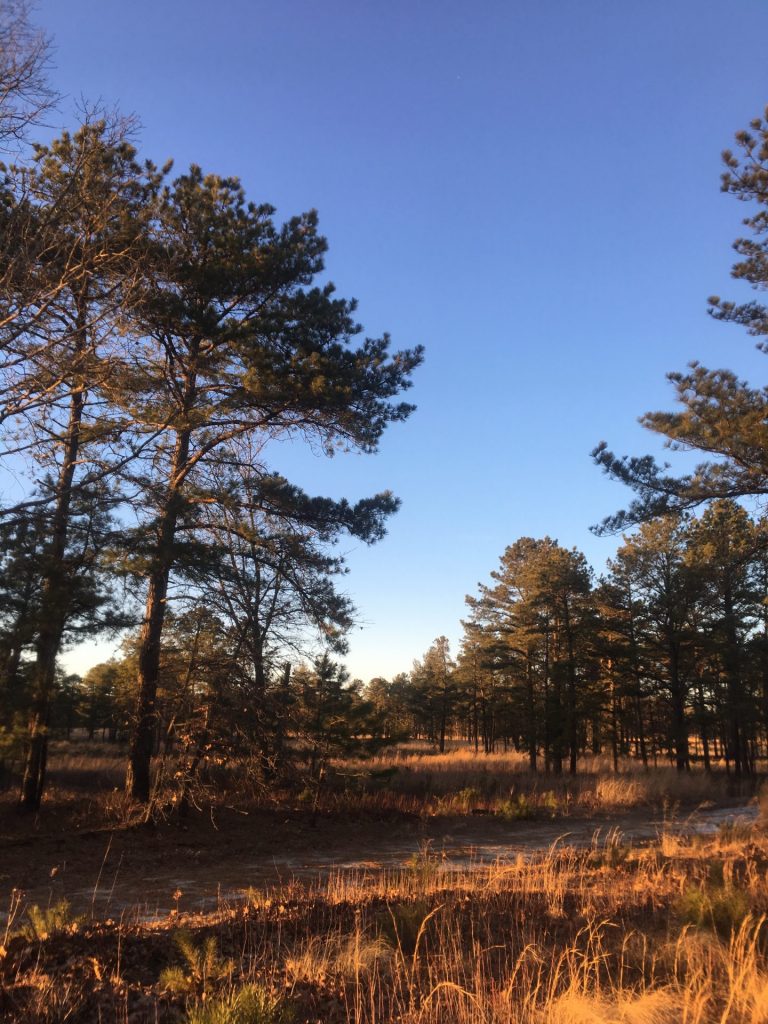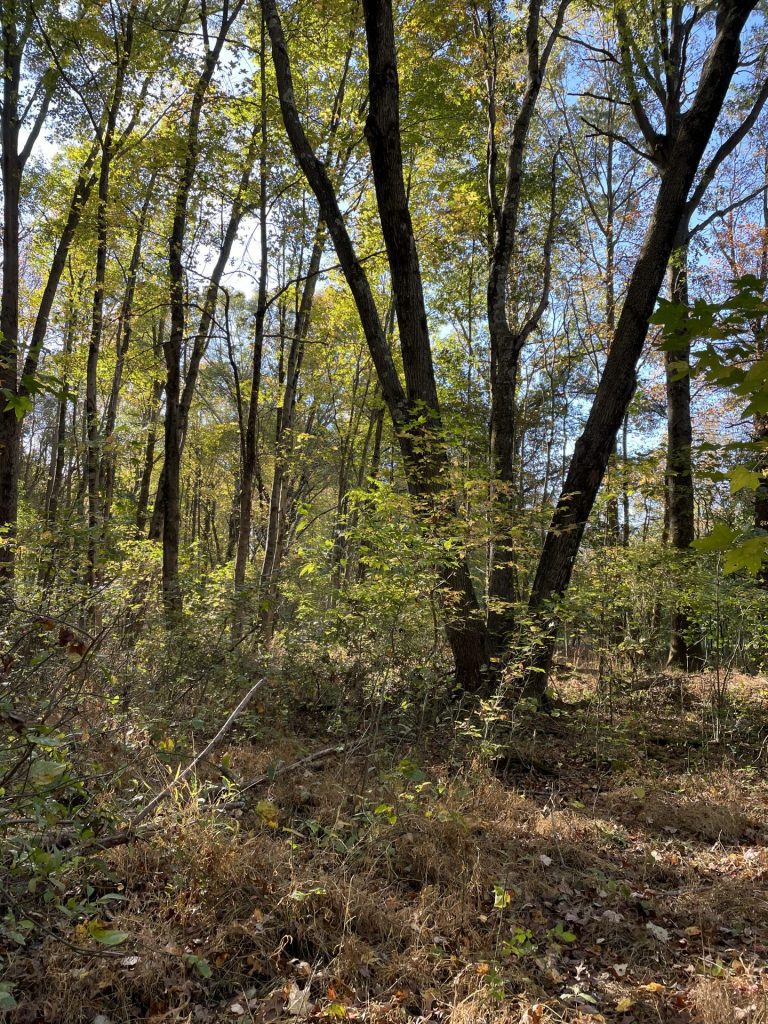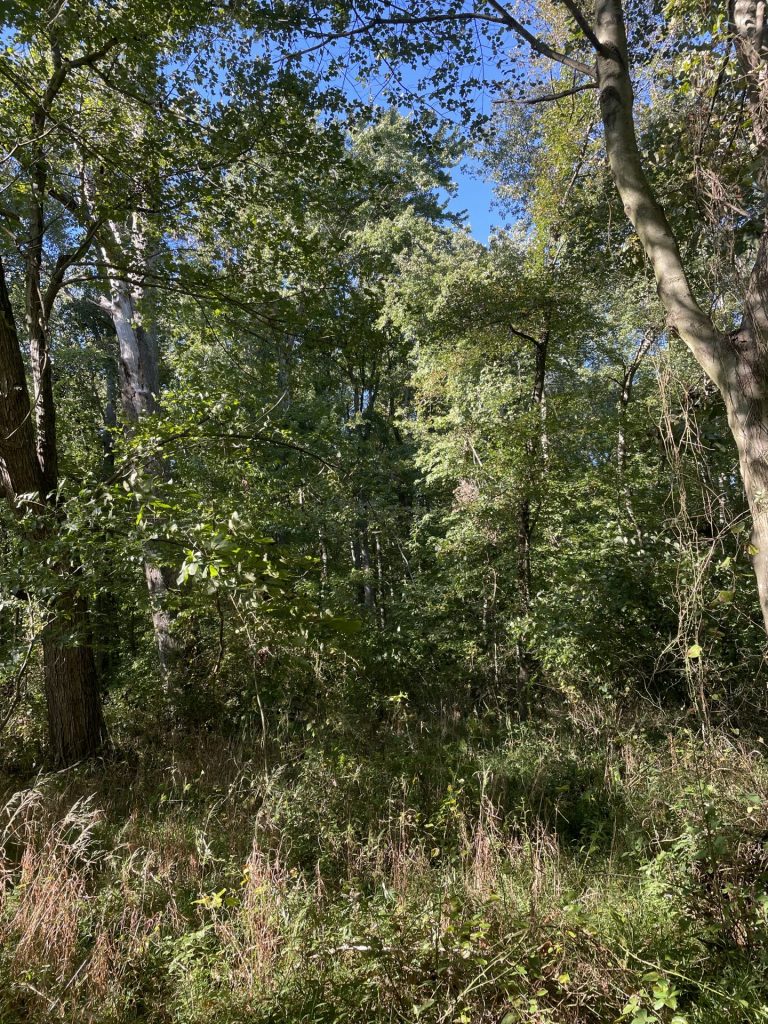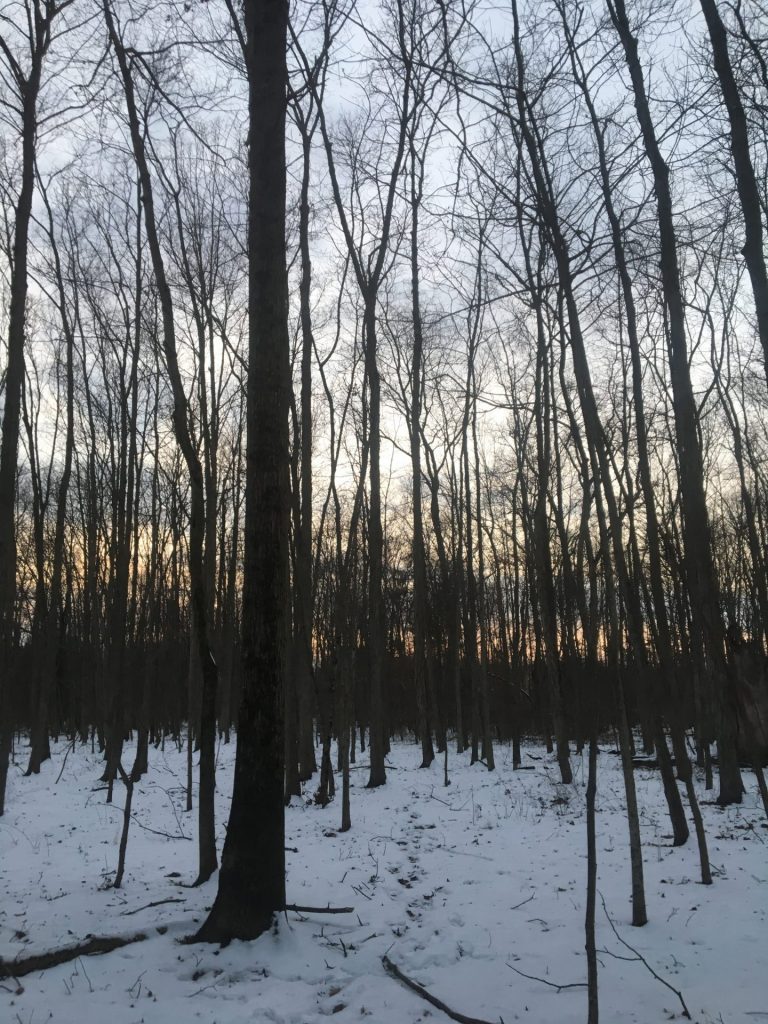
There really is so much in life that you can’t learn any other way except through experience. It’s good to read, and watch, and listen, but there are just some things that you won’t fully understand until you experience it firsthand. Experientia docet.
Small game hunting is one of those things. If only I could go back to when I first started hunting rabbits and squirrels and give myself a few pointers, my first season would have been much more lucrative.
Well, you live and learn. These are the top 10 things I would have told myself if I could go back and give myself a quick dose of experience.
Hopefully you will find them useful, but they are still no substitute for real world experience in teh field – so get out there.
1. Slooooooow down
This is by far, and without any close second, the single most important piece of advice I would give any small game hunter, novice or experienced. That is, if that hunter in question was committed to still hunting. It’s pointless advice for stand hunters.
Regardless, if you still hunt small game, the most important thing you should do is slow down. And then slow down some more. Slow down until you stop, and then just pick up the pace a mite. Now you’re moving at the right speed.
Seriously, it should take you a long time to cover even 100 feet. Like close to 5 or 10 minutes, depending on the type of country you’re hunting.
You should be moving at an absolute crawl.
There are a few good reasons for this. One, moving slowly keeps you as quiet as possible which (in keeping with one of my other tips) is one of the most important items you should observe while small game hunting.
Second, moving as slowly as possible helps keep you from running past quarry that you just don’t notice. I guarantee there are times when you’re in the woods and you walk right by a feeding squirrel or right over a rabbit hunkered down tight with its ears back and eyes closed. You’re going to miss a lot of them anyway (they have good camouflage) but slowing down gives you a better chance of spotting them.
Third, moving slowly helps prevent you from becoming overwhelmed by all of the things happening in the field. Just look at the picture below.

How long do you think it would take you to legitimately parse all of the elements and details of that image, realistically. And I don’t mean to summarize the main trees and other objects visible in that image – I mean really to analyze every small detail to make sure you aren’t missing anything.
It would take a while, right? Something to the tune of a few minutes?
I agree, and that’s just a still frame. Every single step you take is going to change your sight picture just a little bit, which means suddenly you’ll be witnessing changes and new variables with every movement you make, no matter how small.
Every single step you take will put new branches in your line of sight and remove obstacles from it, too. One step can make the difference between presenting and obstructing a target – so take each step carefully, and stop and listen after each one.
And that’s just the visual aspect. There are sounds you’ll need to be listening for as well.
So, again – and I know I’ve belabored this long enough – slow down to a crawl.
It’s better to be quiet than camouflaged
Camouflage gets a lot of press nowadays, with high-tech, nearly photorealistic patterns from Realtree and Mossy Oak ranging alongside highly advanced patterns like Kryptek.
But the thing is, though it makes a difference keeping you concealed from wary game, you really don’t need it for small game like rabbits and squirrels.
I can say with complete certainty that though camouflage might help, it is less important than remaining still and silent. I have been sitting on the ground in full blaze orange, with a blaze orange cap (and my face uncovered) and squirrels have nearly walked into my lap.
Once you spook them or move or make a noise, they’ll be gone in a fraction of a second – but if you sit tight, they might get very close.
Granted, I have had squirrels get much closer to me when my face was covered and I was in camo from head to toe (such as when turkey hunting) but being decked in orange hasn’t kept them that much farther away.
The lesson here: pay less for your camo pattern when small game hunting and pay closer attention to how quickly you’re moving and how much sound you’re making.
2. You don’t need to sit when hunting small game
When I first started hunting small game, I asked a lot of other veteran hunters for advice, both in sporting goods shops and in the field. Almost all of them told me to get a bucket or a folding chair, set it up in the hardwoods near mast, and sit quietly.
If you search online, you’ll get mostly the same advice. Sit quietly and let them come to you.
Very few of them counseled me to still hunt.
However, I’ve done both, and while stand hunting does work for squirrels (not rabbits, in my experience) I’ve had more luck still hunting.
I’m not saying it’s better to still hunt – not at all. Just that if you’ve convinced that you need to sit there and wait for them to come to you, don’t be. It’s not the case.
I always felt that there were squirrels moving and feeding all around me (I could hear them) and that by sitting I was letting all those chances at a shot get away from me. In some instances, I was almost certainly right.
Don’t be afraid to move. You just might just find that you get more opportunities to shoot when you do.
3. Listen closely; you might be able to identify game with your ears alone

I have to admit, in many ways I lean more on my ears than I do on my eyes when I’m in the field. Obviously, you need your eyes to shoot – but when it comes to identifying a potential quarry and honing in on its location, I think your ears may just be your best asset.
Oftentimes, squirrels are feeding in very thick brush and leaf litter in the early to mid-autumn. You can often hear them long before you see them, and they are not dainty. They deliver a very distinctive cadence in their movements, both when bounding over the forest floor and digging through the leaf litter looking for food.
They’re pretty much the loudest things in the fall woods – louder, even, than deer. If you hear something making a racket in dry leaves, it is almost certainly a squirrel. So get closer to that sound (as quietly as you can) and keep your eyes open.
A note on this: most of the muffled sounds you hear in leaf litter will actually be songbirds. They feed on the forest floor in the fall, too, and they’re much more common than squirrels, so if you hear a sound, don’t assume it’s a squirrel. Just pay close attention. If it’s a light, airy flitting, it’s probably some songbirds – if it’s a heavy, aggressive shuffling or shifting, it’s almost definitely a squirrel.
You’re out of luck on this tip with rabbits, though. They can move through grass and even over leaves without making so much as a sound – so you’ll need to keep an extra sharp watch for them.
4. If you’re hunting small game with a shotgun, don’t take shots at squirrels that are facing (or away from) you.
I was hunting recently and contemplated a shot on a squirrel that was a little more than 20 yards off on a limb, slowing heading his way – dead away from me.
This might be a nice shot to take on a pheasant on the wing, or at a clay, since it’s relatively hard to miss.
That’s true. It’s also pretty hard to miss on a squirrel going straight away too. But I still advise against it, unless you’re quite hard up on meat for the pot.
The reason is this: tough as squirrels are (and they are, trust me if you’ve never hunted them), they are still small. Shooting them from right behind or head on is going to send a large percentage of the shot in your pattern straight into the squirrel from back to front (or front to back) right through the most important meat of the squirrel.
In other words, it’s a small target and not a lot of meat to work with as it is. You need to be close enough to make a clean kill (which means enough pellets in a vital area) but also not so close so as to destroy the best meat.
My advice: if you have the luxury, choose your shots, and take shots on squirrels that are broadside. Put the bead right on the edge of squirrel’s nose at ranges from 15 to 30 years and center it right on the head at greater rangers.
Now, I’m not accounting for your choke, here, but unless you’re shooting an open choke (and you shouldn’t be) that will give you a pretty good density of pellets at those ranges, centered right on the squirrel’s vital areas (head and chest).
Done properly, a shot like this will put few to no pellets in the squirrel’s back and rear haunches, where the best meat is. This will preserve the quality of the meat and make it easier for you to clean your harvest later.
Just my 2 cents. For my 50 cents (squirrel call, that is) check the previous link.
5. Put your pattern to work for you
If you’re shooting a full choke, be selecting with the shots you take. Centering a full-choked 12 or 20 gauge on a squirrel or rabbit within 20 yards is going to do some serious damage to the meat and even at 30 or 40 yards you might be dealing with a mess.
As I mentioned in the last section, choose your shots wisely and be mindful of your choke. The more open your choke is, the more direct you’ll want to place your shots on the vital area.
The tighter your choke, the more you’ll want to put your bead on the margin of the target to prevent too much damage to the meat. For squirrels and rabbits, this means placing the bead toward the front of the target, and not just centering it on the vital area.
6. Squirrels are a lot tougher than they look
I once had a self-proclaimed veteran hunter advise me to hunt squirrels with 7.5’s. Never will I ever follow that advice again.
One opening day I took some shells loaded with 7.5’s into the field. I harvested a limit – but most took more than one shot to dispatch at ranges averaging about 25 yards.
I hunted the several previous precedent seasons with 5’s and never had a problem with knockdown power at equivalent ranges. (Same outfit and choke, by the way).
One of the most important lessons I’ve learned from hunting is that squirrels are damn tough. Pound for pound, they might be the toughest thing in the woods. There are times shot enters a squirrel and doesn’t exit the other side, hitting the inside of the skin on the other side of the squirrel and stopping cold.
The point is, in my experience, 7.5’s just don’t carry enough stopping power to cleanly and ethically stop squirrels. I’ve done it with 6’s and 5’s (I prefer 5’s) but I just don’t think it’s worth the compromise of going lower.
I’m not saying it’s not possible to use 7.5’s. I’ve done it. (In fact, in that one anecdote that I offered above, the only reason I had that discussion with that hunter at the shop about shot size is because the shop was out of 5’s and had 7.5’s in stock. I was skeptical that they would get the job done, and was more of a novice, at least, than I am now. I trusted him, but I also learned a hard lesson.)
I think 7.5’s are probably adequate for rabbits. But skip them for squirrels. And, honestly, as I’m writing this, I’m also thinking of the fact that there are fewer 5’s loaded into a charge as compared to 7.5’s which means there’ll be less damage to the meat.
Just go with a larger shot size, provided it’s legal in your area.
7. …And rabbits aren’t
In my experience, though it is limited, rabbits, though substantially bigger than squirrels, are nowhere near as tough as their bushy-tailed brethren. Rabbits are downright fragile and squirrels are made to fight.
So, with that said, smaller shot sizes are acceptable for rabbits because they are easier to dispatch with proper shot placement, but again, the more pellets, the more damage to meat.
Therefore it probably still makes sense to use 6’s or 5’s or even 4’s (if legal in your area) but the choice is yours. I’ve offered my part.
8. Get into the thickest, gnarliest brush to find rabbits

Look at that picture. Not where I’m standing, necessarily, but just beyond it.. That doesn’t look like something you’d want to walk through, right?
That’s exactly what I thought before I stepped into it; but I’ve got news for you. If you don’t want to be there, that’s exactly where the rabbits are.
I once saw a post on a hunting forum, the basis of which was a new hunter looking for advice on how to find rabbits.
The first five or six responses were from trolls. Then, beneath that, there was a comment that was something to the effect of “find a patch of briars so thick they make you bleed when you walk into them. Go in as far as you can, until you can’t take it anymore, and then go in just a bit further. This is no joke and good advice.”
And, after having done this for a few years, I can say that despite the fact that this response sounded extremely tongue-in-cheek, it really was the truth.
Rabbits are like pheasants. They cherish thick tangles of brambles and grasses that are nearly impossible to wade through. See it from their perspective. It protects them against predators both on the ground and in the sky.
Rabbits, however, lack the “flight contingency” of pheasants and cannot flee into the treetops like a squirrel whenever a threat presses them. They need the thickest, gnarliest cover of all.
If you’re looking for rabbits (especially on pressured public land) find the thick stuff – that you won’t want to wade through – then gird up your loins and get into it. That’s where the rabbits are.
One more thing I thought of while writing this that applies to both rabbit and squirrel hunting (but mostly to rabbit hunting): stalk edges. Just like larger game like deer follow edges, so do small game. For whatever reason, that transitional zone between two different sorts of habitats is a magnet for game, and you’ll often see a rabbit squirting out from the edge of a field to cover in the trees (or vice versa) more often than you’ll catch one right in the middle of a field or in the woods. The same goes for squirrels.

9. Look for food to find squirrels

Now a word of wisdom for those that are after chicken of the tree (which, in my opinion, is one of the most engaging and educational game animals to hunt).
If you’re looking for squirrels, look for food – specifically, mast.
Where I live, we have a lot of pine forest. We also have a lot of upland forest. I can tell you from experience I almost never see a gray squirrel in the pines (there are red squirrels there, but they’re not legal game), whereas I see almost all the wild squirrels I’ve come across in upland hardwoods.
Specifically, I see the highest density of squirrels in upland hardwood forest with trees that produce forage for squirrels: beech, hickory, and white oak.
Squirrels absolutely love hickory nuts and beech nuts. In fact, in early fall, you almost can’t get into the hardwoods without hearing them hard at work on the nut husks – that’s where I got the idea to put up my post about the 50-cent squirrel call (which you should definitely check out if you haven’t yet).
If you’re in the hardwoods and you can’t seem to find any squirrels, just adjust your approach. Move around a little and see if you can find some beech or hickory trees, or even some white oak. I’ve also read that squirrels like walnuts, but we don’t have enough wild walnut trees around where I live to weigh in on this from experience.
You can look for the trees or the telltale signs of squirrels: nut husks on the ground or small holes littering the forest floor that indicate that squirrels are either digging for (or burying) nuts.
Then, sit still for a moment and see if you can’t hear the sciurine sounds of fall coming to life.
11. Don’t move in a straight line
Back to rabbits: Once you’ve found a patch of grass or land that you think contains some cottontails, the best advice I can offer is not to push the field in a straight line.
Wander like a corkscrew, and take frequent pauses.
Take a few steps into the field and stop. Then, make an errant turn. Travel a few more steps and turn again. Take long pauses and stay still for as long as your patience will allow.
More often than not, you’ll get something to jump when you’re standing still.
I’ve never been a rabbit, but if I had to guess, when you take pauses or make sudden turns, they get nervous because they think you can either smell or see them – and they can’t stand for this.
A few seconds of a pause is sometimes all it takes for you to succeed in flushing one.
12. Downsize the gauge
Finally, my last bit of wisdom has to do with gauge size. In my experience, pattern density and shot size are more instrumental in dispatching small game than gauge. Granted, you will have more pellets in a 12 gauge shell than in a 20 or 28 or .410, but ultimately, your skill is more important than the gauge you use.
Also, it’s very easy to ruin meat at close range with a 12 gauge and comparatively more difficult with a 20 gauge or .410. This has nothing to do with my belief that it’s more “sporting” to use a smaller gauge. I’m only thinking about this from a stance of practicality.
My goal is to cleanly, ethically dispatch a target and bring as much meat back as possible – and in my experience, a smaller gauge is better for that, especially if you’re targeting small game.
If you’re going to increase something, up your shot size, and not your gauge.
Be safe.
~The Eclectic Outfitte